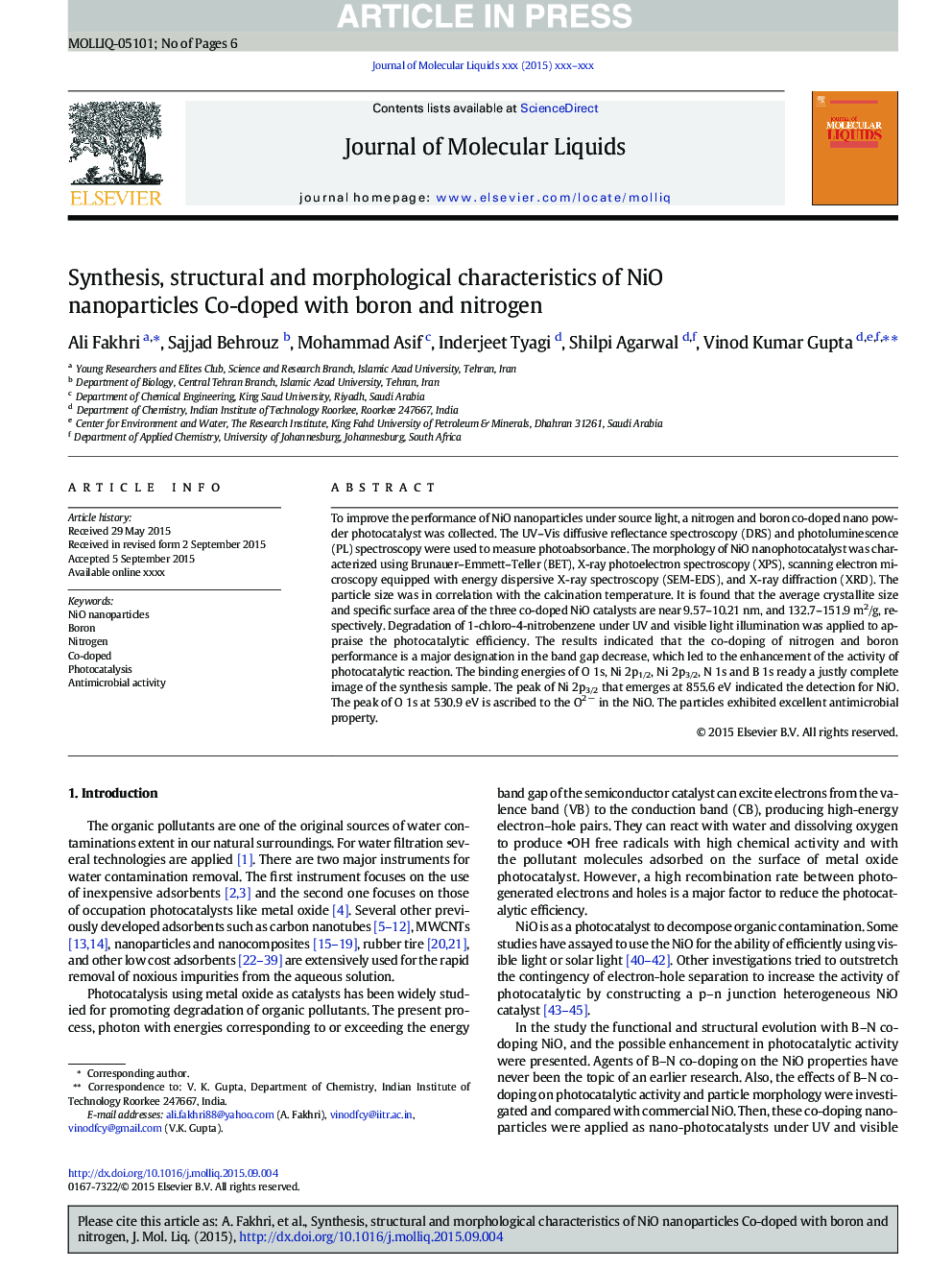| Article ID | Journal | Published Year | Pages | File Type |
|---|---|---|---|---|
| 5410482 | Journal of Molecular Liquids | 2016 | 6 Pages |
Abstract
To improve the performance of NiO nanoparticles under source light, a nitrogen and boron co-doped nano powder photocatalyst was collected. The UV-Vis diffusive reflectance spectroscopy (DRS) and photoluminescence (PL) spectroscopy were used to measure photoabsorbance. The morphology of NiO nanophotocatalyst was characterized using Brunauer-Emmett-Teller (BET), X-ray photoelectron spectroscopy (XPS), scanning electron microscopy equipped with energy dispersive X-ray spectroscopy (SEM-EDS), and X-ray diffraction (XRD). The particle size was in correlation with the calcination temperature. It is found that the average crystallite size and specific surface area of the three co-doped NiO catalysts are near 9.57-10.21Â nm, and 132.7-151.9Â m2/g, respectively. Degradation of 1-chloro-4-nitrobenzene under UV and visible light illumination was applied to appraise the photocatalytic efficiency. The results indicated that the co-doping of nitrogen and boron performance is a major designation in the band gap decrease, which led to the enhancement of the activity of photocatalytic reaction. The binding energies of O 1s, Ni 2p1/2, Ni 2p3/2, N 1s and B 1s ready a justly complete image of the synthesis sample. The peak of Ni 2p3/2 that emerges at 855.6Â eV indicated the detection for NiO. The peak of O 1s at 530.9Â eV is ascribed to the O2Â â in the NiO. The particles exhibited excellent antimicrobial property.
Related Topics
Physical Sciences and Engineering
Chemistry
Physical and Theoretical Chemistry
Authors
Ali Fakhri, Sajjad Behrouz, Mohammad Asif, Inderjeet Tyagi, Shilpi Agarwal, Vinod Kumar Gupta,
